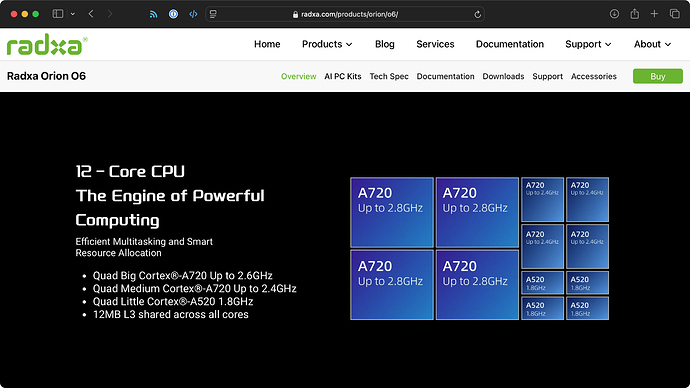When firmware and kernel support are done right I do not need schematics to run system.
When it comes to EDK2: as above.
When it comes to kernel: I already built kernels which work on NVidia Grace or Graviton 4. They are Armv9 systems, existed before you announced that beta program. Your board is capable of running mainline kernel. I would not even run your 6.1.44 kernel as I do not use SBC vendor kernels.
DRAM speed capped to 4266 MT/s on O6? thread shows that SoC is unable to make use of that bandwidth.
And “dram is capable so why not” is bullshit. I had a device with 400MHz SoC which had DDR2 chips capable of running at 800MHz. And was used at less than half of memory bandwidth.

